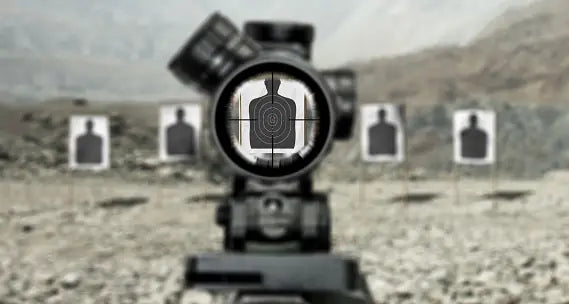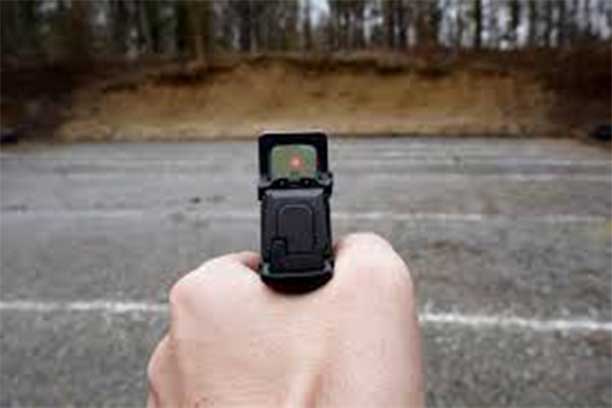Rifle scope mounts are essential components in the world of shooting and hunting, playing a crucial role in connecting your scope to your firearm. This article will delve into the intricacies of rifle scope mounts, covering their types, selection criteria, maintenance, and impact on shooting performance.
What are Rifle Scope Mounts?Different Types of Rifle Scope Mounts
How to Choose the Right Rifle Scope Mount?
Maintaining Your Rifle Scope Mounts
(Reading Time: 7-9 Minutes)

Different Types of Rifle Scope Mounts
There are several types of scope mounts, including one-piece (single-piece) and two-piece (separate) mounts, as well as options for different heights and inclination angles. There are several types of rifle scope mounts, each with its own advantages:
One-Piece Mounts: These offer increased rigidity and are often preferred for heavy-recoiling rifles or long-range shooting. They typically have two rings connected by a single base.
Quick-Detach Mounts: These allow for rapid removal and reattachment of the scope without losing zero, useful for transportation or when switching between optics.
Picatinny/Weaver Mounts: These utilize a standardized rail system, offering versatility and ease of installation across different firearms.
Dovetail Mounts: Common on air rifles and some rimfire rifles, these slide into a dovetail groove on the receiver.
How to Choose the Right Rifle Scope Mount
Selecting the appropriate mount involves considering several factors:
Compatibility: Ensure the mount matches your rifle's receiver and your scope's tube diameter.
Height: Choose a mount height that allows proper eye alignment with the scope when in your natural shooting position.
Material and Construction: Look for durable materials like aircraft-grade aluminum or steel, with robust construction to withstand recoil.
Intended Use: Consider your shooting style and environment. For instance, quick-detach mounts might be preferred for tactical applications.
Budget: While it's tempting to economize on mounts, remember that they're crucial for maintaining accuracy. Invest in quality mounts that match the caliber of your rifle and scope.

Do Rifle Scope Mounts Require Frequent Adjustment?
Generally, a properly installed rifle scope mount should not require frequent adjustment. However, periodic checks are advisable, especially after heavy use or if the rifle has been subjected to rough handling. Signs that adjustment might be needed include:
1. Shifts in point of impact
2. Visible looseness in the mount
3. Difficulty maintaining zero
Regular inspection and tightening of screws can prevent most issues. Using thread-locking compounds can help maintain the mount's stability over time.
How Does Mount Height Affect Shooting?
Mount height can significantly impact your shooting experience and performance:
1. Cheek Weld: Proper mount height allows for a comfortable and consistent cheek weld, crucial for accuracy.
2. Eye Relief: The right height ensures optimal eye relief, reducing the risk of scope eye and allowing for quick target acquisition.
3. Parallax: Incorrect mount height can exacerbate parallax issues, affecting accuracy at various ranges.
4. Ergonomics: Mount height affects the overall ergonomics of the rifle, influencing comfort during extended shooting sessions.
5. Clearance: Higher mounts may be necessary for larger objective lenses or to clear iron sights.
Are Rifle Scope Mounts Universal?
While there are standardized mounting systems like Picatinny rails, rifle scope mounts are not entirely universal. Factors affecting universality include:
Scope Tube Diameter: Mounts must match the diameter of your scope tube (typically 1 inch, 30mm, or 34mm).
Ring Height: Varying objective lens sizes and rifle designs necessitate different ring heights.
Mounting Systems: Some rifles use proprietary mounting systems, limiting mount options.
Always verify compatibility between your rifle, scope, and mount before purchase.
Maintaining Your Rifle Scope Mounts
Proper maintenance of rifle scope mounts is crucial for consistent performance:
- Regular Cleaning: Keep mounts free of dirt, debris, and moisture. Use a soft brush and gun cleaner to remove buildup.
- Inspection: Regularly check for loose screws, wear, or damage. Address issues promptly to prevent accuracy degradation.
- Proper Torque: Use a torque wrench to ensure screws are tightened to manufacturer specifications. Over-tightening can damage components.
- Lubrication: Apply a light coat of gun oil to prevent rust, especially in humid environments.
- Storage: When not in use, store your rifle in a dry, temperature-controlled environment to prevent corrosion and stress on the mounts.
- Re-zeroing: After maintenance or remounting, always re-zero your rifle to ensure accuracy.
Rifle scope mounts are more than just accessories; they're integral to the accuracy and reliability of your shooting system. By understanding the types available, how to choose the right mount, and how to maintain it properly, you can significantly enhance your shooting experience and performance. Remember, a quality mount is an investment in your rifle's accuracy and your shooting success. Whether you're a hunter, competitive shooter, or recreational firearms enthusiast, giving due attention to your rifle scope mounts will pay dividends in improved accuracy and shooting enjoyment








